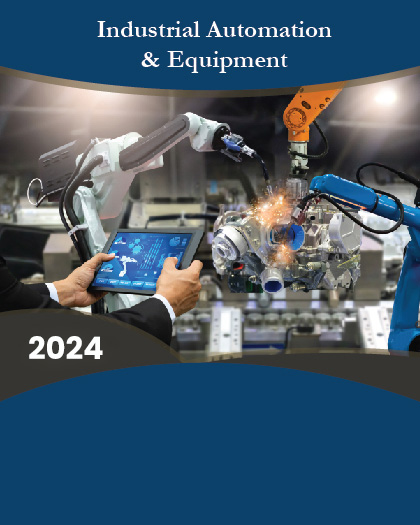
The amorphous alloy is a non-crystal substance created by rapidly freezing liquids of high temperature. Because there is no rule of atomic arrangement, the energy loss (hysteresis loss) is small when the flux of magnetic induction passes through the iron core. In addition, eddy current loss is decreased because the thickness is approximately 0.03 mm, which is about 1/10 compared with silicon steel. Therefore, the no load loss (eddy current loss and hysteresis loss) can be decreased to about 1/5 of silicon steel's.
Amorphous metal is an alloy with a non-crystalline structure produced by ultra-rapid quenching (about 1 million ?C per second) of molten alloy. Because amorphous metal has no anisotropic properties, which originated from a crystalline structure, and there are no crystalline grain boundaries to prevent motion of magnetic domain walls, it shows excellent magnetic properties such as high permeability and low loss while having a high-saturation magnetic flux density.
Amorphous metal cores are effective for most distribution transformers. They are ideally suited for renewable energy applications such as wind farm and solar power, as they typically operate with 20~40% low load conditions. Amorphous metal cores have been in use for over 20 years in liquid-filled transformers, and this technology is now being applied to dry type transformers.
The initial costs of an amorphous core transformer are higher than of a crystalline silicon steel core transformer: first, the amorphous material itself is more expensive than crystalline silicon steel and second, the saturation magnetic flux density of amorphous steel is lower than that of silicon steel. This means larger sizes of amorphous core transformers are required, which results in a higher cost per unit. However, the higher initial costs can be compensated by lower operating costs over the lifetime of the transformers due to their increased energy efficiency.
The market for amorphous metal core is concentrated with players such as Hitachi, Mangal Electrical Industries, UAML (Usha Amorphous Metals Limited), TI-Electronic, ENPAY, Shanghai Zhixin Electric, Advanced Technology & Materials, Zhaojing Incorporated Company, Qingdao Yunlu Advanced Material Technology, Foshan Catech, Kotsons and so on. Among them, Hitachi is the leader with about 57% revenue market share in 2016.
The leading companies own the advantages on better performance, more abundant product's types, better technical and impeccable after-sales service. Consequently, they take the majority of the market share of high-end market. Looking to the future years, the slow downward price trend in recent years will maintain. As competition intensifies, prices gap between different brands will go narrowing. Similarly, there will be fluctuation in gross margin.
The industry is expected to remain innovation-led, with frequent acquisitions and strategic alliances adopted as the key strategies by the players to increase their industry presence. Market stays in mature period with a clear concentration. Meanwhile, optimize product mix and further develop value-added capabilities to maximize margins. Manufacturers can take advantage of this situation by reinforcing their production units and supply-chains to avoid any delay in production turn-around-times (TAT) and supply-lead-times.
According to this study, over the next five years the Amorphous Metal Cores market will register a 7.6% CAGR in terms of revenue, the global market size will reach USD 960 million by 2024, from USD 620 million in 2019. In particular, this report presents the global market share (sales and revenue) of key companies in Amorphous Metal Cores business, shared in Chapter 3.
This report presents a comprehensive overview, market shares, and growth opportunities of Amorphous Metal Cores market by product type, application, key manufacturers and key regions and countries.
This study considers the Amorphous Metal Cores value and volume generated from the sales of the following segments:
Segmentation by product type: breakdown data from 2014 to 2019, in Section 2.3; and forecast to 2024 in section 11.7.
C Core
E Core
Other
Segmentation by application: breakdown data from 2014 to 2019, in Section 2.4; and forecast to 2024 in section 11.8.
Transformer
Inverter
Others
This report also splits the market by region: Breakdown data in Chapter 4, 5, 6, 7 and 8.
Americas
United States
Canada
Mexico
Brazil
APAC
China
Japan
Korea
Southeast Asia
India
Australia
Europe
Germany
France
UK
Italy
Russia
Spain
Middle East & Africa
Egypt
South Africa
Israel
Turkey
GCC Countries
The report also presents the market competition landscape and a corresponding detailed analysis of the major vendor/manufacturers in the market. The key manufacturers covered in this report: Breakdown data in in Chapter 3.
Hitachi
Advanced Technology
Zhixin Electric
Zhaojing Incorporated
Qingdao Yunlu
Foshan Catech
ENPAY
Mangal
Kotsons
UAML
TI-Electronic
In addition, this report discusses the key drivers influencing market growth, opportunities, the challenges and the risks faced by key manufacturers and the market as a whole. It also analyzes key emerging trends and their impact on present and future development.
Research objectives
To study and analyze the global Amorphous Metal Cores consumption (value & volume) by key regions/countries, product type and application, history data from 2014 to 2018, and forecast to 2024.
To understand the structure of Amorphous Metal Cores market by identifying its various subsegments.
Focuses on the key global Amorphous Metal Cores manufacturers, to define, describe and analyze the sales volume, value, market share, market competition landscape, SWOT analysis and development plans in next few years.
To analyze the Amorphous Metal Cores with respect to individual growth trends, future prospects, and their contribution to the total market.
To share detailed information about the key factors influencing the growth of the market (growth potential, opportunities, drivers, industry-specific challenges and risks).
To project the consumption of Amorphous Metal Cores submarkets, with respect to key regions (along with their respective key countries).
To analyze competitive developments such as expansions, agreements, new product launches, and acquisitions in the market.
To strategically profile the key players and comprehensively analyze their growth strategies.
























